Hockey Session (Under 14s): Pre-scan and receive (Start Time: 2017-10-01 10:30:00)

Profile Summary

| Name: | Danny Berry |
|---|---|
| City: | Sheffield |
| Country: | United Kingdom |
| Membership: | Adult Member |
| Sport: | Hockey |
Description
- Pre-scan effectively before receiving the ball
- Demonstrate an accurate first touch
- Decision making during gameplay
- Recycling to maintain possession
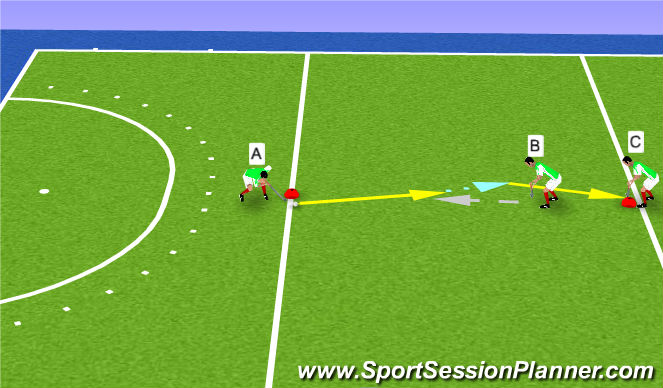
See the guidance at the top of this page to understand why you are not seeing interactive Hockey images.

Peel off forehand (5 mins)
Same set as previous. B posts up again.
This time the imaginary (or semi active) defender is to players B's left, so they cushion the ball in and turn to their right. The ball is never stopped, just cushioned into the forehand to receive in flow on the move going towards C, with soft hands on the stick.
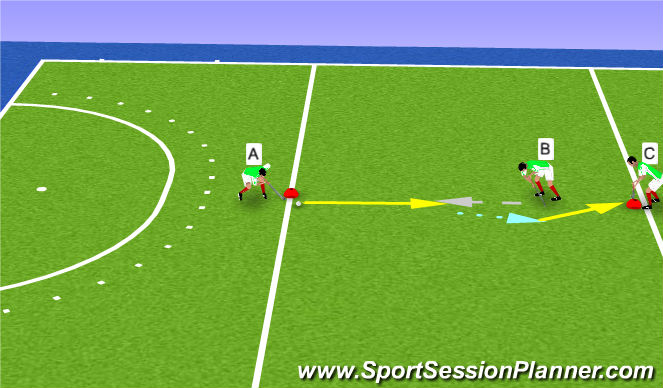
See the guidance at the top of this page to understand why you are not seeing interactive Hockey images.

Peel off backhand (5 mins)
As previous drill, this time imaginary/semi active defender is on left of B, so they receive on their backhand, again with soft hands to cushion the ball in rather than stopping it.
Ensure B makes contact with the ball just after it goes past their feet - this allows their stick to be angled into the ground, rather than angled up and making the ball lift up.
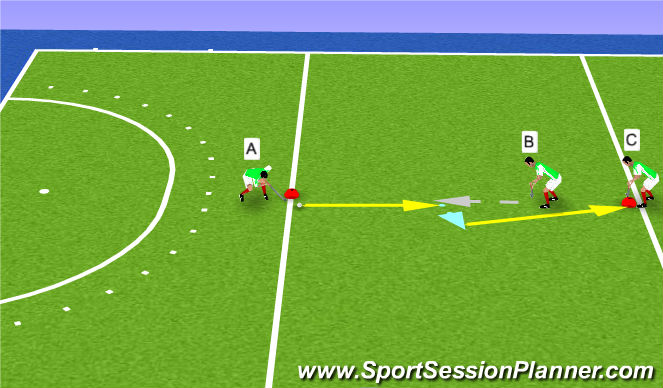
See the guidance at the top of this page to understand why you are not seeing interactive Hockey images.

Special (5 mins)
Set up as previous.
This time imaginary/semi active defender is either very close to B or a long distance away.
B receives on forehand, leads with left leg and allows ball to go past their left foot. In one motion as they receive the ball, they clear their right foot out of the way so they are now facing player C, and drag the ball across to their right. This is effective if defender is too close as they don't have time to react to the turn, and it is a quicker turn to get B facing forwards if they have a lot of space.
Ensure player B doesn't turn until the ball makes contact with the stick so they don't give themselves away to the defender.
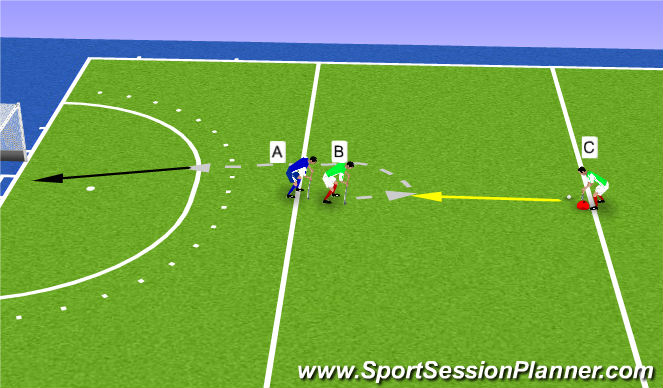
See the guidance at the top of this page to understand why you are not seeing interactive Hockey images.

2v1 (20 mins)
Essence:
Players decide which receive to use after pre-scanning.
Structure:
Similar set up to previous. This time C pass to B who makes a Lead. A is now a fully active defender marking B, so B has to choose which receive to use, beat the defender and then take their shot at goal.
Depending on numbers in groups we can have 2 or 3 of these going into 1 goal (1 at a time).
Rotation - C becomes B, B becomes A and A goes to back of queue behind C.
Variation:
- Increase passing distance, make it a lifted pass
- Make it a 3v2.
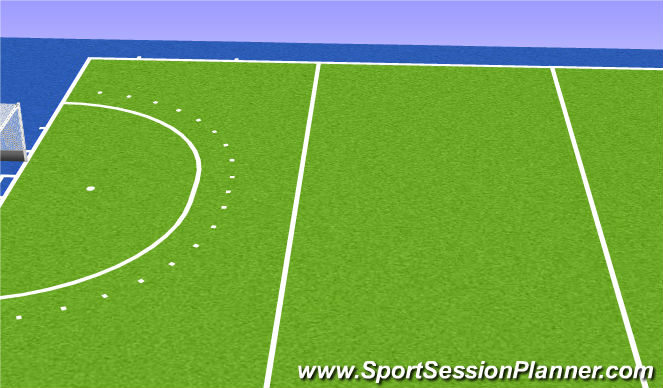
See the guidance at the top of this page to understand why you are not seeing interactive Hockey images.

Gameplay (40 mins)
Stress players need to pre-scan everytime they receive the ball during a match, in order to make good decisions, and be able to maintain possession - recycling (moving the ball from left to right of pitch, or right to left) when necessary and is the right decision as that's where the space is.
Ask them to think about how many times they look around the pitch, check their shoulders etc to be aware of their surroundings.








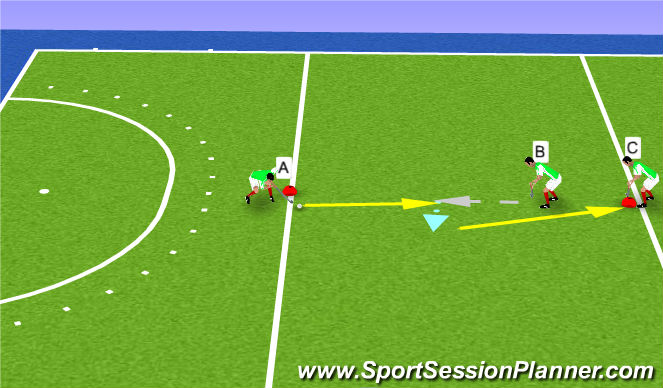
 Play animation
Play animation Play step-by-step
Play step-by-step Repeat (toggle)
Repeat (toggle) Full Screen
Full Screen Pause
Pause Stop
Stop
Wide Based receipt (10 mins)
Essence:
Players work on various receives but pre-scan before receiving
Structure:
In 3s. Player B works on specific receive whilst A & C receive and feed into player B. Rotate positions every minute to ensure player B can work with intensity. Can work in 4s if needed with played D acting as a shadowing defender.
This receive is the most important receive - the 'bread and butter' 100% safe receive to retain possession.
Player B 'sets their space' away from A to give them space to lead back into to get away from their defender. Whilst leading back they look over their shoulder to see where the imaginary/semi active defender is and A passes into B who recieves with a wide base (left and right foot wider than shoulders width apart), and receives the ball inside their right foot (to shield the ball from a defender back marking them). B ensures they prescan and check their shoulders everytime before receiving the ball. B then rolls out to their forehand and passes to C. The same is then repeated from C to B to A.
Variations:
- Increase ball pace/distance of pass/make pass slightly lifted.
- Pass in can be a push, slap or a hit to work on passing skill as well as receive.